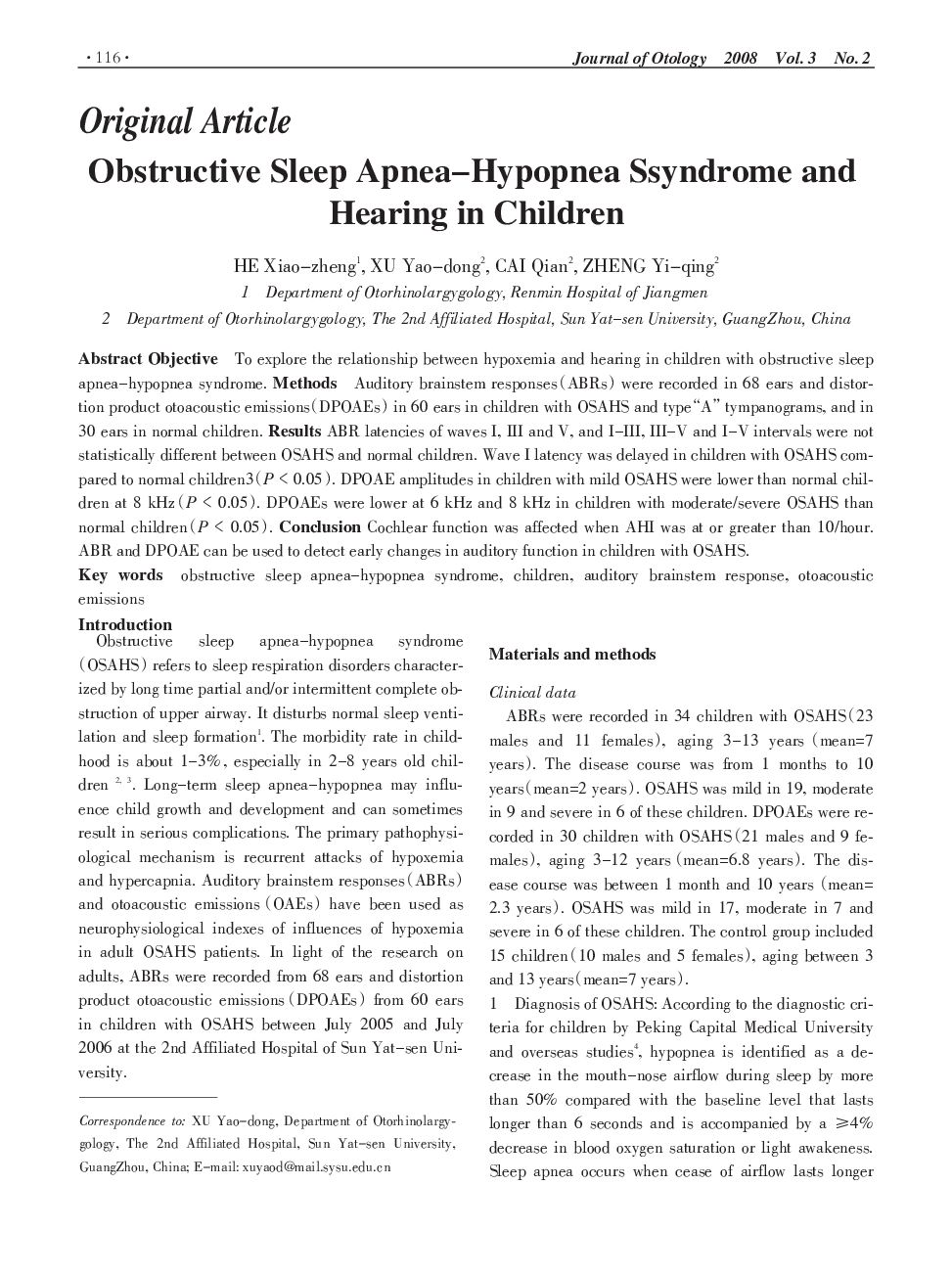| Article ID | Journal | Published Year | Pages | File Type |
|---|---|---|---|---|
| 4116858 | Journal of Otology | 2008 | 5 Pages |
ObjectiveTo explore the relationship between hypoxemia and hearing in children with obstructive sleep apnea–hypopnea syndrome. Methods Auditory brainstem responses (ABRs) were recorded in 68 ears and distortion product otoacoustic emissions (DPOAEs) in 60 ears in children with OSAHS and type “A” tympanograms, and in 30 ears in normal children.ResultsABR latencies of waves I, III and V, and I–III, III–V and I–V intervals were not statistically different between OSAHS and normal children. Wave I latency was delayed in children with OSAHS compared to normal children3 (P < 0.05). DPOAE amplitudes in children with mild OSAHS were lower than normal children at 8 kHz (P < 0.05). DPOAEs were lower at 6 kHz and 8 kHz in children with moderate/severe OSAHS than normal children (P < 0.05).ConclusionCochlear function was affected when AHI was at or greater than 10/hour. ABR and DPOAE can be used to detect early changes in auditory function in children with OSAHS.
